Effective Methods to Fix a Slowly Draining Shower
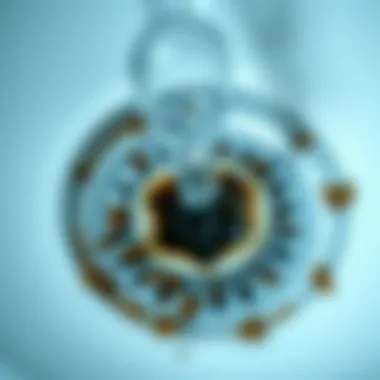
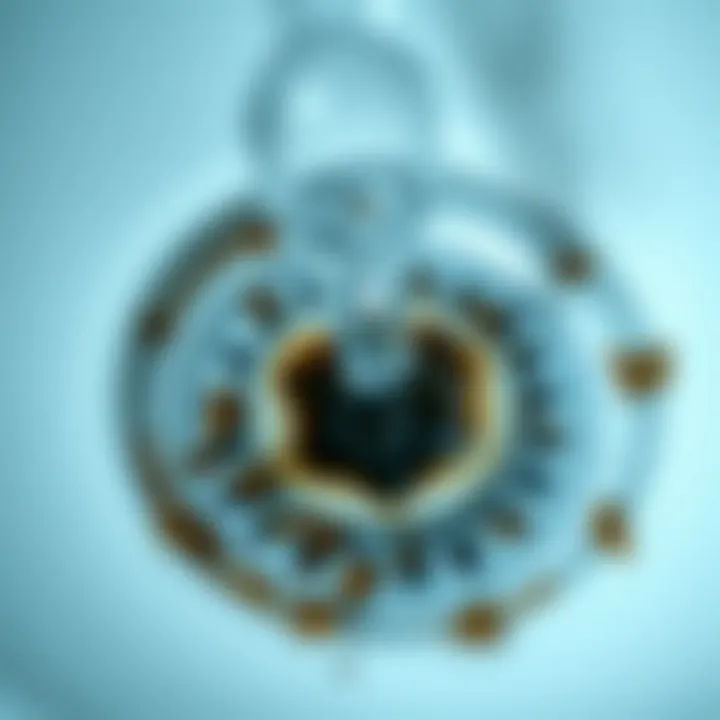
Intro
When it comes to home maintenance, most people don't give much thought to any issues lurking behind the shower curtain—especially a slowly draining shower. In reality, this seemingly minor nuisance can march towards major discomfort, all while silently impacting hygiene. After all, standing water can breed mold and create a breeding ground for microorganisms. Enter the quest for solutions. This guide is all about tearing down the common barriers that keep your shower from working efficiently and getting to the root of the problem. By exposing the various culprits behind slow drainage and presenting effective remedies, homeowners can regain the soothing luxurious experience that showers are meant to provide.
Understanding the plumbing network within one's home isn’t akin to rocket science, but it does require a keen eye and a bit of patience. From blocked drains to broken pipes, we’ll navigate through a range of issues that you might encounter when showering, ensuring that you're equipped to tackle these problems head-on. So, whether you’re a budding DIY enthusiast or a seasoned handyman, fusing knowledge with action can certainly transform a sluggish shower into a revitalizing retreat.
Let’s dive into the specifics and shed light on some of the effective methods for resolving this vexatious issue, ultimately restoring both comfort and hygiene in your bathroom sanctuary.
Identifying the Problem
Identifying the problem is the foundational step in addressing the unpleasnt experience of a slowly draining shower. Recognizing the nuances of your drainage system is not just about aesthetics; it's crucial for maintaining hygiene and preventing further complications. A sinkhole of stagnant water can create a breeding ground for bacteria, leading to health risks. More than that, it can morph into a major plumbing issue if left unattended, incurring heavy repair costs later on.
Understanding Slow Drainage
Slow drainage usually indicates deeper issues that might lurk in the shadows of your pipes. When water takes its sweet time to gush down, it's often a sign of either clogs or systemic plumbing faults. In more complex cases, the issue might link back to the sewer lines. Ignoring a slow drain at first can lead to a litany of bigger problems, and ultimately the discomfort of standing in a puddle while trying to wash yourself.
Awareness of the following signs can aid detection:
- Unpleasant odors from the drain
- Gurgling sounds when the water drains
- Water pooling around your feet during a shower
A proactive approach includes monitoring these symptoms and addressing them before they evolve into larger problems.
Common Symptoms of Drain Issues
If the shower becomes a mini swimming pool while you wash, it’s time to pay attention. Here are the main symptoms of drainage issues to keep an eye out for:
- Water accumulation: If you notice that water does not drain away swiftly, it’s like having a red flag waving in your face.
- Gurgling noises: When your fixtures start making strange sounds, it’s often a cry for help from your plumbing.
- Bad odors: Funky smells can be a result of stagnant water, which may lead to mold if not taken care of.
- Frequent clogging: If you find yourself reaching for the plunger more often than usual, there may well be an underlying problem that needs sorting.
"Proactively diagnosing your plumbing issues can save you from a money pit down the line."
By staying vigilant about these symptoms, you can catch potential problems early. So, let the detective work begin; don’t just sit there and let the shower waters rise!
Common Causes of Slow Draining Showers
Understanding the common causes of slow draining showers is crucial for any homeowner to effectively resolve plumbing problems. Delving into these underlying issues not only helps pin down the precise nature of blocked or sluggish drainage but ultimately enhances the overall hygiene and comfort of one’s personal space. Ignoring these causes can lead to more significant plumbing dilemmas down the line, resulting in costly repairs and inconvenient disruptions in the household. Being familiar with the common culprits can save time, money, and lots of frustration.
Clogs and Blockages
Hair Accumulation
Hair clogs are a primary concern in shower drainage, especially in households where long hair is common. When strands of hair take a detour from their intended fate of going down the drain, they can lodge themselves along the pipe, forming a dense blockage. This aggregation not only hinders water flow but often creates a dam for other debris that follows. Hair is light yet deceptively efficient at forming catch-alls for soap and other residues.
This particular issue highlights a significant characteristic of hair blockages: they tend to build up gradually. If not attended to, they can morph into a solid mass over time, making removal increasingly difficult. Ignoring even a minor hair clog can snowball into a much larger problem.
One advantage of recognizing hair accumulation as a primary culprit is the straightforwardness of preventative measures. Regularly cleaning hair from the drain and considering tools like hair catchers can significantly curb future blockages.
Soap Residue
Soap residue contributes to drainage problems in a less visible, yet equally troublesome manner. Over time, as soap dissolves and mixes with water, it can leave a sticky film clinging to the walls of your pipes. This residue tends to trap other particles, slowly reducing the diameter through which water can flow.
What makes soap residue particularly noteworthy is its ubiquity; it relies on no specific demographic—everyone uses soap. Thus, its prevalence makes understanding and tackling this issue essential for every household.
The unique feature of soap residue is the way it can combine with other materials, creating thicker blockages that are harder to eliminate. To detract from this buildup, periodic maintenance, such as flushing with boiling water, can help keep pipes clear.
Mineral Buildup
In areas with hard water, mineral buildup emerges as another significant factor in slow draining showers. Minerals like calcium and magnesium can precipitate from water and accumulate over time. This gradual buildup can reduce the internal diameter of pipes, causing water to drain sluggishly.
The distinctive characteristic of mineral buildup is how stubborn it is. Unlike hair or soap, which can often be removed mechanically, mineral deposits frequently necessitate chemical or mechanical removal methods. This trait underscores the need for vigilance in households with hard water.
Striking a balance with mineral buildup is essential; while addressing immediate drainage issues, homeowners should also consider installing water softeners to prevent recurrence long-term.
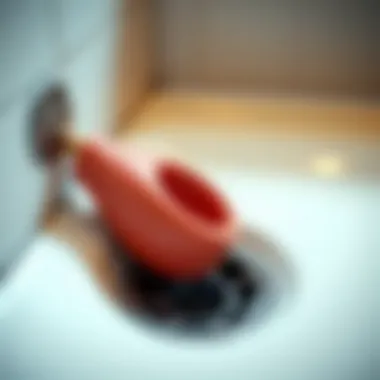
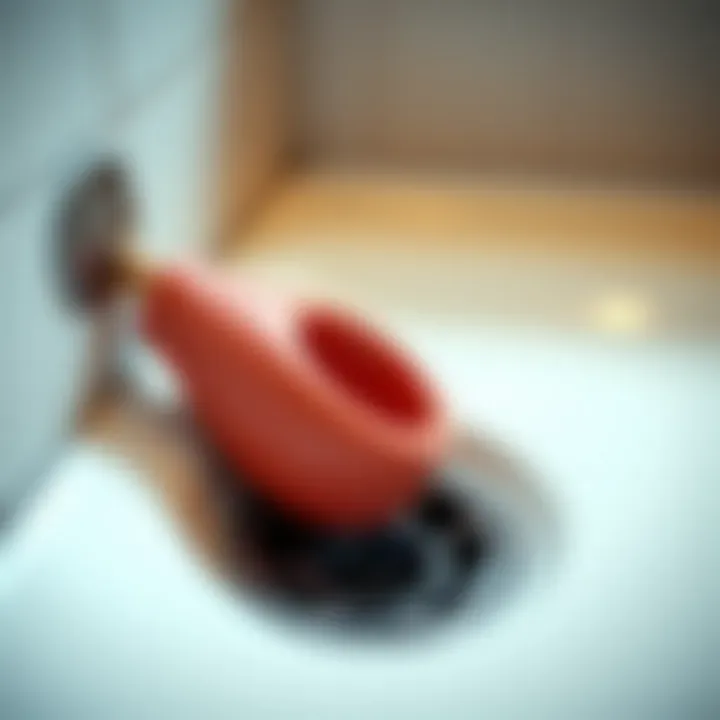
Pipe Issues
Corroded Pipes
Corroded pipes can be a nightmare for a homeowner, often leading to slow draining, leaks, or even complete pipe failure. As pipes age, materials like copper and steel can deteriorate, resulting in rough interior surfaces that impede water flow.
The notable feature of corroded pipes is the potential for not only obstruction but also contamination of water. Rust and debris may eventually enter the water supply, negatively affecting quality.
This topic is vital for homeowners whose properties are aging or those who live in areas rich in corrosive elements.
Corrosion may require the attention of a professional. Recognizing the problem early can significantly reduce repair costs and headaches in the future.
Pipe Misalignment
Misaligned pipes can also yield significant drainage issues. When sections of pipes shift or become misaligned due to soil movement, temperature changes, or improper installation, water flow can be obstructed. This issue might not be immediately evident as the signs often emerge slowly.
The unique aspect of pipe misalignment is that it often demands a higher level of expertise to diagnose and repair than simpler clogs. Homeowners may not recognize the symptoms until significant slow draining occurs.
Taking preventative measures during installation can greatly minimize future problems. For existing systems, routine inspections and maintenance are indispensable.
Tree Roots Intrusion
Finally, tree root intrusion represents one of the more complex challenges to slow draining showers. Roots are naturally drawn to the moist environment of sewer lines and can force their way into cracks and joints, causing blockages.
The characteristic of this issue is its progressive nature; a small intrusion today can lead to serious drainage complications tomorrow. Homeowners may also experience unexpected overflows or backups.
The drawback is that managing tree roots often requires professional intervention, particularly if heavy machinery is needed to remove severely obstructed roots.
Sewer Line Problems
Blockages in the Main Line
Blockages in the main sewer line present another significant cause of slow draining showers. When waste and debris accumulate, they can restrict drainage significantly. This can affect several plumbing fixtures across the house simultaneously.
What is crucial about main line blockages is the potential impact on the entire plumbing system. Identifying signs before they escalate can save time and resources.
Proactive measures such as annual inspections can be beneficial in identifying issues before they snowball into larger problems, possibly requiring costly repairs.
Breaks and Leaks
Finally, breaks and leaks in the sewer line also drive slow drainage problems. Damaged pipes can not only hinder water flow but also lead to hazardous situations such as sewage backups. This issue often requires prompt attention, as the health risks associated with leaking sewage can be severe.
The key characteristic of breaks and leaks is the urgency with which they must be addressed. Evidence can often show itself in the form of wet patches in the yard, foul odors, or damp areas in basements.
Recognizing the signs means acting fast, seeking professional help to resolve the issue before it spirals into a bigger concern.
Initial Diagnosis Steps
When it comes to tackling the frustrating issue of a slowly draining shower, getting the facts straight from the get-go intertwines closely with effective and hassle-free solutions. The initial diagnosis steps serve as the all-important groundwork that can save both time and money in the long run. By recognizing the symptoms and identifying the root causes, homeowners can approach their drainage issues with clarity and purpose.
Taking the time to assess the specifics of the situation can often lead to straightforward fixes. Diagnosing a drainage problem can seem like a tall order, but it’s merely a matter of knowing where to look and what to examine. This process helps in narrowing down whether the issue stems from minor clogs or more complex plumbing concerns, thus tailoring the solution accordingly.
Being systematic in these initial steps not only prevents unnecessary worry but also equips you with information should you need to consult a professional later. A well-informed homeowner is better prepared to speak their plumber’s language, making the entire experience smoother.
Inspecting Drainage
Taking a closer look at the drainage itself is essential to understanding what might be going awry. Start by observing the speed at which water drains. Does it sit in the shower basin for too long? That’s often the first cue that something is amiss. Look also for water pooling around the drain, a clear sign that it’s struggling to keep up.
A physical inspection can unveil a lot. Remember to check the drain cover; sometimes hair and debris can become lodged here, creating small blockages that disrupt the flow. If possible, remove the drain cover and clean it out. Make sure you're also checking the visible plumbing—not just the drain, but various parts that lead towards the main line.
By doing this, you might find evidence of soap scum, hair, or even small bits of lost jewelry that could lead to larger issues down the line if ignored. Furthermore, if you have any plumbing conjectures, examine the upstream pipes, since problems may lie elsewhere but present themselves in the shower.
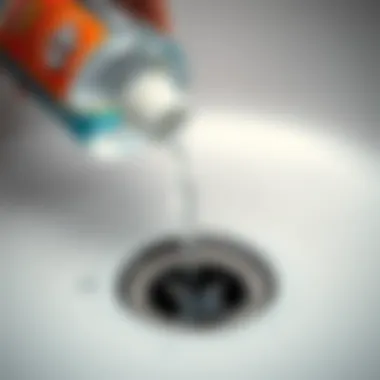
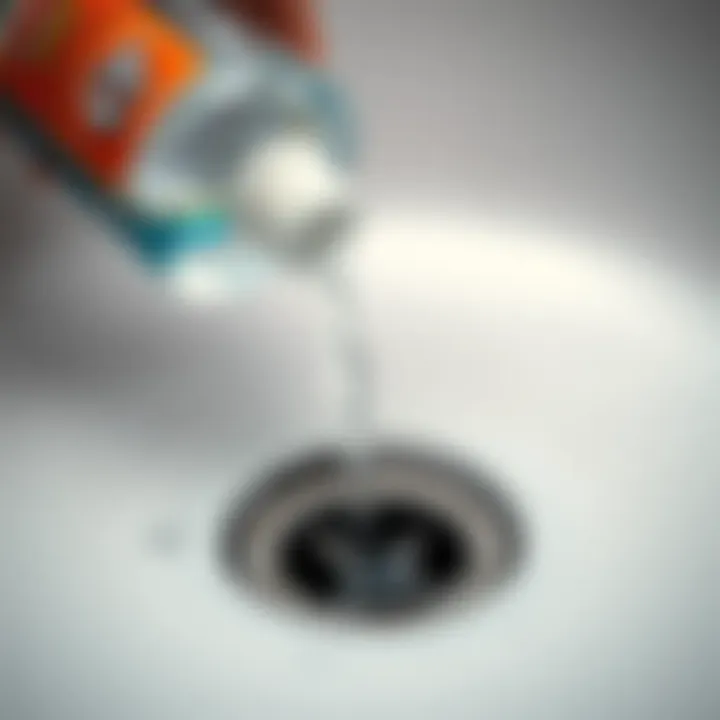
Using a Plumber's Snake
Once you've conducted a visual inspection, the next logical step is to employ a plumber's snake. This handy tool is not only for professionals; homeowners often find it quite manageable to use as well. A plumber's snake, or auger, is designed to navigate around curves and bends in pipes and can effectively clear more stubborn clogs that a simple drain cleaner may not.
To use it correctly, insert one end of the snake into the drain and rotate the handle. The flexible cable will curl and push through debris that is causing the blockage. If you're feeling resistance, don’t force it too hard; instead, feel for what might be obstructing the path. This tool checks all the boxes for accessibility and efficiency.
Remember to wear gloves for hygiene reasons. After clearing the blockage, rinse the drain with hot water to help flush away remaining debris. It’s amazing how a small bit of determination and the right tools can make such a difference!
In summary, the initial diagnosis steps are all about observing the symptoms and taking a thorough, hands-on approach to inspect and rectify the main issues at hand. Going beyond guesswork, these actions can lead to fast resolutions and keep your shower running smoothly. Don't forget about regular maintenance afterwards to ward off future woes.
"Often, a little observation and effort yields big rewards in maintenance and prevention."
For more detailed plumbing methods, consider checking out resources such as Wikipedia or This Old House.
DIY Solutions to Fix Drainage Issues
Addressing a slow draining shower isn't just about convenience; it’s about ensuring your home remains a healthy environment. Draining issues, if ignored, can transform into bigger headaches—think mold, unpleasant odors, and plumbing nightmares. That’s where DIY solutions prove invaluable. They are often cost-effective, can be done without professional help, and provide satisfaction when you see immediate results. Whether it’s a simple fix or a more involved project, knowing how to tackle these problems yourself can save both time and money.
Using Boiling Water
One of the simplest and most effective methods to resolve a slow-draining shower involves using boiling water. This technique harnesses the power of heat to break down blockages that may be causing drainage issues. Boiling water works particularly well for grease, soap buildup, or minor clogs. Just heat a pot until the water reaches a rolling boil and then carefully pour it down the drain in stages, allowing it to work its magic.
However, the caveat here is to ensure that the pipes can handle the heat. Older plumbing systems might not respond well to sudden temperature changes, leading to potential damage. If you proceed with boiling water, do so cautiously, pouring it slowly instead of dousing the entire lot at once.
Chemical Drain Cleaners
Chemical drain cleaners can be a go-to solution for many homeowners facing stubborn clogs, but they come with their own set of advantages and disadvantages.
Types of Cleaners
Different types of chemical cleaners exist, each formulated for specific drainage problems. Caustic cleaners, like sodium hydroxide, work by generating heat, which helps to break down solids. Acidic cleaners, on the other hand, use acidic compounds to dissolve materials blocking the pipes.
The primary merit of these products is their quick acting nature; they can often dissolve clogs in a short time frame, making them a popular choice. But, one must remember they contain harmful substances which can overweight environmental concerns and personal safety. Always scrutinize the labels, ensuring the product is compatible with your specific pipes and plumbing setup.
Safety Precautions
It’s vital to prioritize safety when using chemical drain cleaners. Always wear gloves and eye protection to avoid splashes. Proper ventilation is equally important since fumes can be hazardous if inhaled. When you combine different cleaners, the fumes can form toxic gases, so this is a strict no-no. Moreover, if you pour one cleaner after another into the drain, you might create a potent mixture that can burst forth unexpectedly. The dangers associated with chemical cleaners highlight the importance of using them wisely and as a last resort if other methods aren’t effective.
Natural Alternatives
For those who lean towards eco-friendly solutions, natural alternatives can often provide effective ways to clear clogs.
Baking Soda and Vinegar
A classic duo in the world of DIY home repair, baking soda and vinegar is a favorite among eco-conscious homeowners. The chemical reaction that occurs when baking soda meets vinegar produces carbon dioxide gas, which can help to break up clogs without damaging pipes. To utilize this method, pour about half a cup of baking soda down the drain, followed by half a cup of vinegar. Let the mixture fizz for at least 30 minutes, then rinse with hot water. The reaction not only clears minor blockages but also freshens up the pipes. This method is gentle on both your plumbing and the environment.
Salt and Hot Water Mixture
Another effective natural solution involves combining salt with hot water. Salt acts as an abrasive agent, helping to scrub away buildup in the pipes while the hot water flushes debris through. Mix half a cup of salt with a pot of boiling water and pour it down the drain. This method is especially useful for periodic maintenance, helping to prevent slow drainage in the first place. Plus, it's a simple solution that doesn't require any harsh chemicals, making it safe for any household.
When to Call a Professional
Knowing when to enlist the help of a professional plumber can save you time, money, and frustration in dealing with a shower that refuses to drain properly. While many drainage issues may appear manageable, they can sometimes reveal deeper problems lurking within your plumbing system. Understanding the signs that suggest the need for professional intervention can make a significant difference in how the situation is resolved.
Signs Indicating Professional Help
It's crucial to recognize several indicators that point to the need for calling in an expert. These signs include:
- Multiple Drains Backing Up: If you find that not just your shower but also your sink or toilet are struggling to drain, it’s time to call a plumber. This could suggest a blockage further down in the sewer line that requires professional equipment and knowledge.
- Persistent Bad Odors: If you notice foul smells emanating from the drain, it may indicate a sewage problem. This can pose health risks and should not be ignored.
- Water Damage: The presence of water stains, peeling paint, or damp areas on your walls or ceiling could point to a more significant issue, such as pipe leaks. This can lead to mold growth and structural damage.
- Frequent Clogs: If you're finding that clogs happen repeatedly, even after attempted remedies, this might indicate that the issue is something more severe than simple hair accumulation or soap scum.
In all these cases, ignoring the problem might escalate into costly repairs or health hazards. Seeking out a professional ensures that you address the issue effectively, minimizing long-term damage to your home.
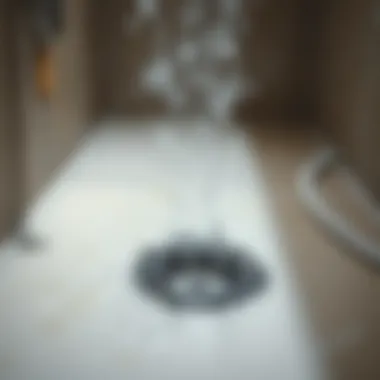
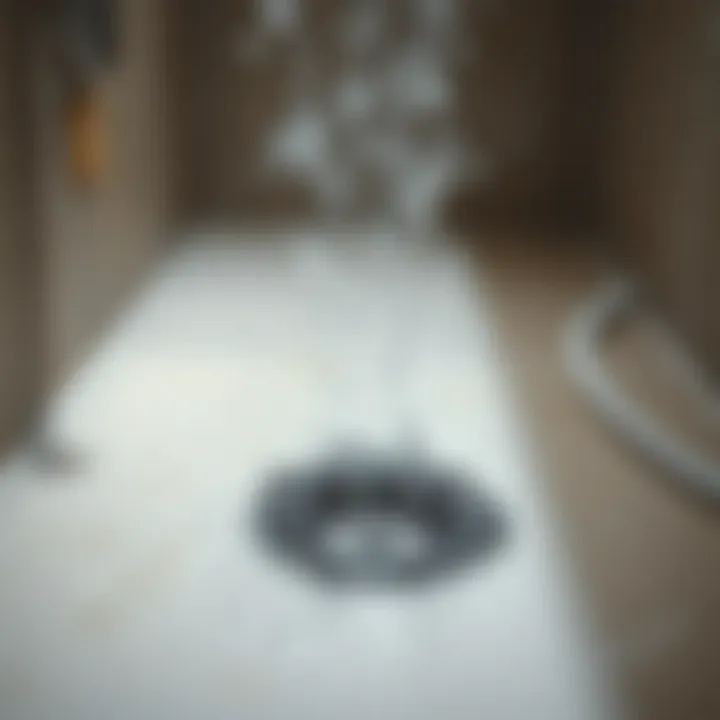
Choosing the Right Plumber
When you've decided to call a plumber, selecting the right one is just as crucial as recognizing when to call. The quality of service can vary widely among professionals; therefore, careful consideration is necessary.
Evaluating Qualifications
One of the first checks should be to evaluate the plumber’s qualifications. This includes their licensing, insurance, and any certifications that speak to their training and expertise. A licensed plumber is required to meet certain standards, ensuring a level of skill and professionalism.
Key Characteristics of Evaluating Qualifications:
A qualified plumber will typically possess a license from the state. Additionally, apprenticeships or formal training through trade schools enhance their skill set. Checking customer reviews can also provide insight into their experience and reliability.
Benefits of This Approach:
By vetting plumbers based on qualifications, you're less likely to encounter inexperienced technicians who may worsen the problem. A qualified professional is likely to diagnose the issue correctly and execute a proper repair, leading to a smooth resolution.
Understanding Costs
Understanding the costs involved is also pivotal when hiring a plumbing professional. Costs can vary significantly based on several factors, including the severity of the problem, the complexity of the required repair, and the plumber's pricing structure.
Key Aspects of Understanding Costs:
Estimates, service fees, hourly rates, and parts needed all come into play. A reliable plumber should provide a detailed estimate before beginning work. Knowing this can prevent unpleasant surprises on your final bill.
Advantages of Clarity in Pricing:
Being clear on costs helps set expectations and protects you from being overcharged. Transparency indicates professionalism and can alleviate any doubts about the plumber’s integrity.
In summary, knowing when to call a professional and how to choose one wisely can save you time and potential headaches. The right plumber brings expertise that not only resolves your current issues but also helps prevent future problems.
Preventive Measures for Future Drainage Issues
When it comes to encountering slow-draining showers, being proactive is always better than dealing with the aftermath. Taking preventive measures can save one from the hassle and frustration of clogged pipes or deteriorating plumbing systems in the long run.
A bit of foresight can make all the difference—keeping drains running smoothly contributes not just to convenience, but also to maintaining a hygienic home environment. It’s about nipping problems in the bud, ensuring that they don’t morph into bigger headaches later on.
Regular Maintenance Practices
To keep things flowing, regular maintenance is key. Performing routine checks on your shower's drainage system can help you spot issues before they become serious. Make it a habit to:
- Inspect the drain cover to eliminate any visible debris. A simple check can prevent hair and soap scum from forming a nasty mess.
- Clean the trap occasionally. The drain trap is often a silent culprit in slowing down drainage. It’s often filled with hair and soap residue, things that can lead to blockages. Just remove the trap, clean it, and reattach it.
- Flushing the drains with hot water once a month can help dissolve any buildup. This simple step can go a long way.
By making these practices part of your cleaning routine, one can significantly reduce the chances of having to call a plumber in the future.
Choosing Drain Covers
Investing in a good drain cover is often overlooked, but it’s a worthwhile consideration. A well-designed shower drain cover can act as the first line of defense against clogging. Here are some things to keep in mind:
- Opt for mesh drain covers over solid ones. They allow water to flow freely while trapping hair and other debris effectively.
- Make sure the cover is easy to clean. If it’s a hassle to remove and clean, chances are you won’t do it regularly.
- Choose covers that fit snugly over your shower drain. A poor fit can lead to gaps where debris can still get through.
Choosing the right drain cover not only promotes better drainage but also extends the life of your plumbing system.
Monitoring Water Usage
Keeping an eye on how much water is flowing down the drain can provide insights into potential future drainage problems. High water usage can lead to faster wear and tear on plumbing systems. Here's what one might consider:
- Be mindful of shower times. Taking shorter showers not only saves water but also reduces the stress on your drainage system.
- Track if there's a sudden increase in water usage. This could signify leaks or other plumbing issues that need addressing.
- Use water-saving devices like low-flow showerheads, which can help maintain a steady flow while conserving water.
Monitoring water usage might seem trivial, but it’s a step worth taking for the long-term health of your plumbing system.
By implementing these preventive measures, homeowners can stay ahead of the curve and ensure that their shower drains remain clear and functional for years to come. A little effort upfront can mean a world of difference down the line.
Closure
In wrapping up, addressing the issue of a slow draining shower holds paramount importance not just for preserving the comfort of your bathing experience but also for maintaining hygiene in your home. This article has delved into the realm of slow draining showers, offering a comprehensive guide that empowers homeowners to understand and tackle the myriad of drainage issues one might face.
When you look back at what we’ve covered, the journey from identifying the problem to common causes, diagnosis, methods to fix it, and prevention offers a rounded approach that enables practical, effective strategies for tackling this nuisance.
Recap of Key Points:
- The factors contributing to a slow draining shower can range from simple clogs due to hair and soap buildup to deeper plumbing issues like corroded pipes or tree root interference.
- DIY solutions and professional advice complement each other, ensuring your shower runs smoothly. Regular maintenance and preventive measures play a crucial role.
- Knowing when to call in a professional plumber can save you time, energy, and money in the long run, avoiding potential messes that could escalate if left unattended.
"Prevention is better than cure," an old saying reminds us that maintaining what we have can often save us the hassle of larger problems down the line.
Final Thoughts on Drain Management:
When managing your drainage system, consider it an ongoing aspect of home care—just like your roof or your garden’s upkeep. A mindful approach to how you treat your drains can make all the difference. Simple tweaks, such as using a drain cover or being cautious about what goes down the drain, can significantly extend the lifespan of your plumbing systems. Awareness and proactivity, along with the insights from this article, keep the water flowing and the shower a place of rejuvenation rather than frustration.
Utilizing natural remedies and understanding your own system’s quirks can empower you, but also grasping when to reach for a professional allows for a well-rounded approach to drain management. With the right tools and knowledge, you can ensure that your shower continues to serve its purpose efficiently, allowing you to enjoy refreshing, uninterrupted showers now and well into the future.















